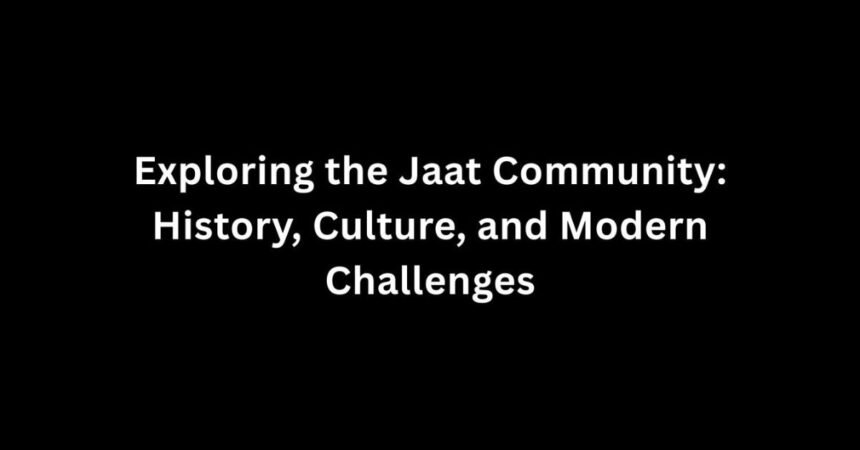The term “Jaat” refers to a prominent social group primarily found in Northern India, particularly in the states of Haryana, Punjab, Rajasthan, and Uttar Pradesh. The Jaat community is rich in culture, history, and traditions, contributing significantly to the social fabric of these regions. This blog post aims to explore the various aspects of the Jaat community, including their historical background, socio-economic status, cultural practices, and current challenges. By examining these facets in detail, we hope to provide a comprehensive understanding of what it means to be part of the Jaat community.
Historical Background of the Jaat Community
The origins of the Jaat community can be traced back to ancient times, where they were known as agriculturists and warriors. The term “Jaat” is believed to have derived from the word “Jat,” which historically referred to a group of people engaged in farming and land management. Their role as farmers positioned them as a crucial part of the agrarian economy in North India.
Throughout history, the Jaats engaged in various military conflicts and held significant power and influence, particularly during the medieval period. They ruled over various territories, showing their prowess in wars. The Jaat rulers such as Raja Suraj Mal of Bharatpur are often remembered for their contributions to the region’s cultural and political landscape.
In the 19th and 20th centuries, the Jaat community began to gain recognition for its contributions to the independence movement in India. Influential leaders from the community participated actively in the struggle against British rule. This historical involvement has instilled a sense of pride and identity among the members of the Jaat community.
Socio-Economic Status of the Jaat Community
Today, the Jaat community holds a significant position in the socio-economic framework of Northern India. The majority of Jaats are engaged in agriculture, which remains the backbone of their economy. They are known for their prowess in farming, producing various crops, including wheat, sugarcane, and mustard.
Over the past few decades, the Jaat community has witnessed substantial socio-economic progress. They have made strides in education and employment, with many members moving into professional sectors such as engineering, medicine, and business. However, this transition has not been without challenges.
- Traditional Occupations: Agriculture is still considered a primary occupation among Jaats. Many families own vast agricultural lands.
- Urban Migration: A significant number of Jaats are migrating to urban areas in search of better job opportunities.
- Education: There is a growing emphasis on education within the Jaat community, leading to increased enrollment in schools and higher educational institutions.
- Political Influence: The Jaat community has a notable presence in politics, often influencing regional policies and decisions.
Cultural Practices of the Jaat Community
The culture of the Jaat community is vibrant and diverse, characterized by unique traditions, festivals, and social customs. These customs are often linked to their agrarian lifestyle and have been passed down through generations.
Festivals and Celebrations
Jaats celebrate various festivals with great enthusiasm:
- Holi: The festival of colors is celebrated with joy, marking the arrival of spring.
- Diwali: The festival of lights is observed with family gatherings and the lighting of oil lamps.
- Baisakhi: This harvest festival is especially important for Jaats, signifying the beginning of the harvest season.
Traditional Clothing
The traditional attire of the Jaat community reflects the cultural heritage of the region:
- Men: Typically wear dhotis and kurtas, often paired with turbans.
- Women: Wear colorful ghagras and cholis, adorned with intricate embroidery.
Folklore and Music
The Jaat community has a rich tradition of folklore and music. Folk songs and dances like Gidda and Bhangra are integral to their celebrations and rituals, often narrating tales of bravery and valor.
Modern Challenges Facing the Jaat Community
Despite the progress made by the Jaat community, several challenges remain. These include:
- Reservation Issues: The demand for reservation in jobs and educational institutions has led to political tensions.
- Economic Disparities: While many Jaats have prospered, there are still pockets of poverty that hinder development.
- Youth Disengagement: With urban migration, a segment of the youth is losing touch with their cultural roots.
- Access to Education: Although there is a push for education, quality education facilities are still lacking in some rural areas.
Conclusion
In summary, the Jaat community is an integral part of India’s cultural and socio-economic landscape. From their historical roots as warriors and farmers to their current role in modern society, the Jaats have showcased resilience and adaptability. While they celebrate their rich heritage, they also face contemporary challenges that require attention and resolution.
As we have explored the various dimensions of the Jaat community, it becomes clear that understanding and supporting their socio-economic development is crucial for fostering inclusivity and progress. We encourage readers to engage further with this topic. Share your thoughts in the comments below, and don’t hesitate to share this post with others who might find it enlightening. Together, let’s continue to explore and appreciate the diversity of our communities!
Learn More About Jaat Community
Wikipedia on Jat People
Indian Government Official Portal
